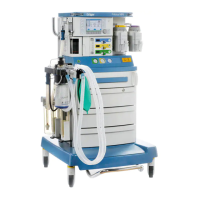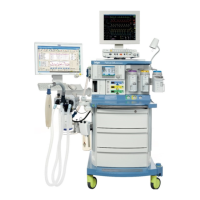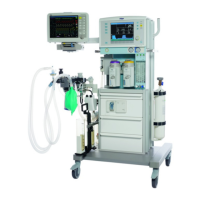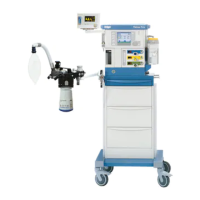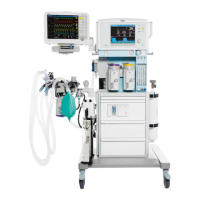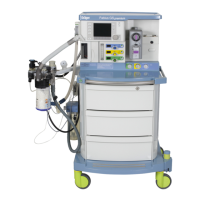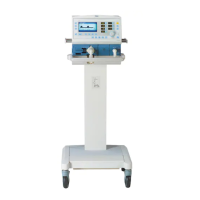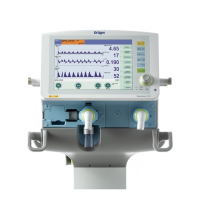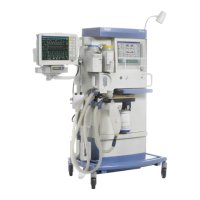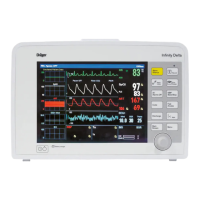Instructions for use Fabius Tiro SW 3.n 75
Assembly and preparation
Calculating the resistance of the breathing
system and connected accessories
To keep the patients' work of breathing as low as
possible, according to general safety standards a
total inspiratory and expiratory resistance of
6.0 hPa (cmH
2O) at 60 L/min must not be
exceeded.
The chapter ''Breathing system'' contains the
inspiratory and expiratory resistance values of the
breathing system without taking into consideration
the breathing hoses. In this manner it is possible to
determine the respective resistance of the patient
when using different breathing hose sets and/or
filters.
The following formula is used to calculate the
resistance (R):
RInspiration = RBreathing system_insp + RInsp hose +
RBreathing bag hose + RInsp filter(port) + RInsp filter(Y-
piece)
RExpiration = RBreathing system_exsp + RExsp hose +
RExsp filter(port) + RExsp(Y-piece)
Make sure that for the calculation of the resistance
only the accessories resistance values and the
peak flows are used for the respective accessory
category and patient category, e.g., resistance
values for adults at 60 L/min, for children at
30 L/min, and for neonates at 5 L/min.
Inserting a new O2 sensor capsule
1 Remove the O2 sensor housing from the
inspiratory valve.
2 Unscrew the screw cap (A) from the O
2 sensor
housing.
3 Take the new O
2 sensor capsule from the
package.
4 Place the O
2 sensor capsule (B) in the housing
so that the ring-shaped conductor touches the
contacts in the housing.
5 Screw on the screw cap (A) tightly by hand.
6 Reinsert the O
2 sensor housing in the
inspiratory valve.
WARNING
Risk of electric shock
If the O
2 sensor is replaced during operation,
it can lead to transferring of leakage current.
Do not touch the patient.
20971
WARNING
Danger of erroneous O2 measurement.
An incorrectly mounted O
2 sensor will lead to
incorrect measurement results.
Make sure that the O
2 sensor is inserted
correctly in the inspiratory valve, see page 21.
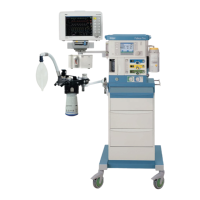
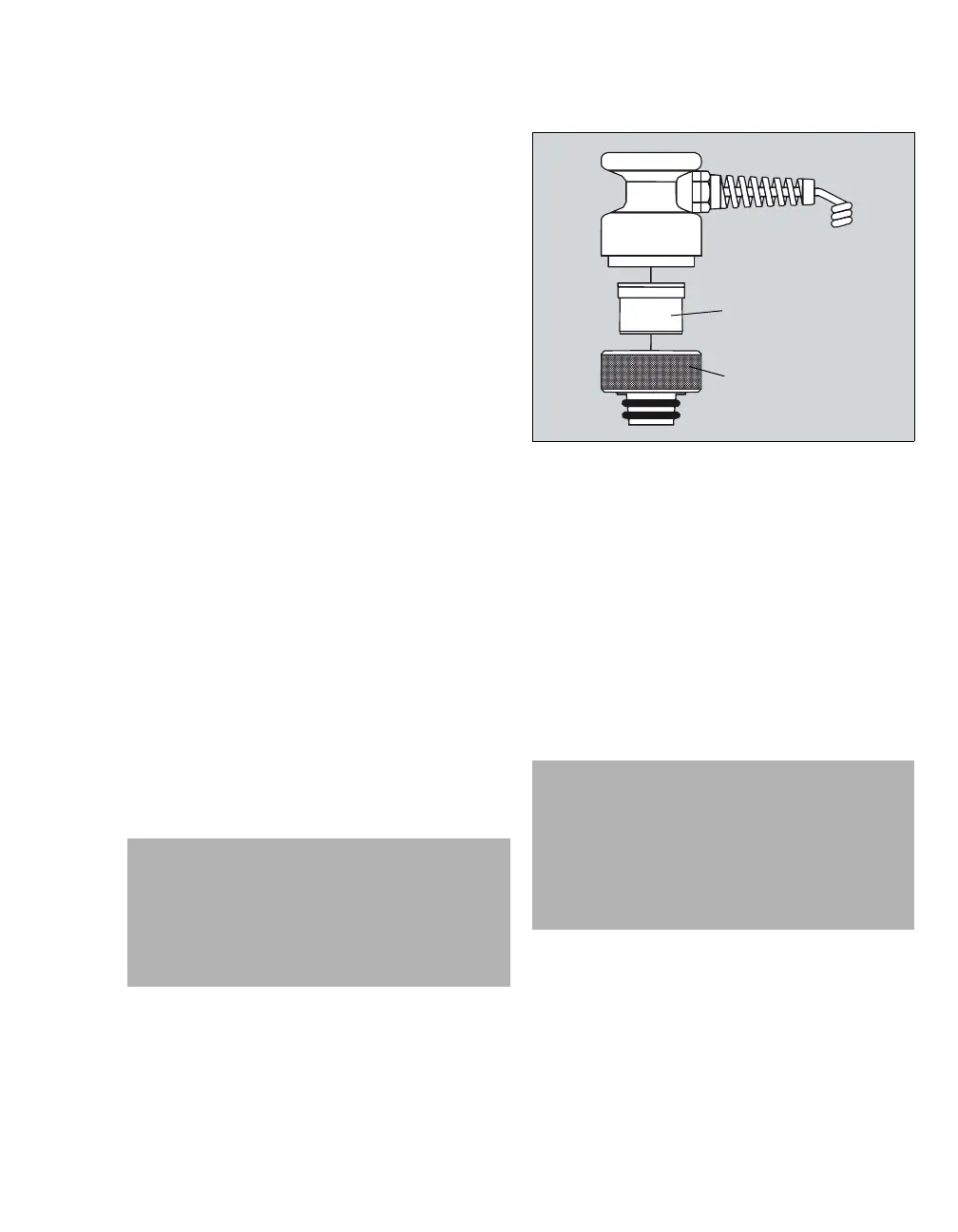